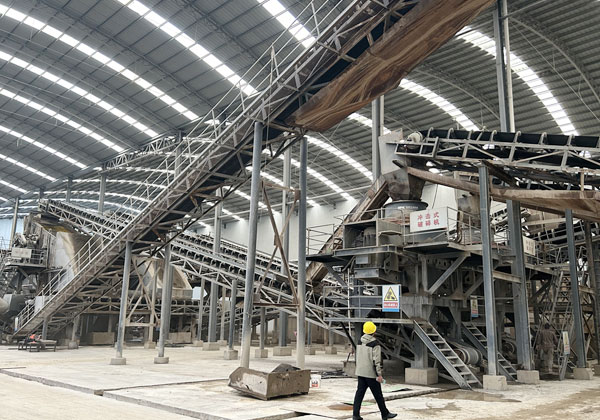Processing of rocks into crushed stone
The process of turning raw rocks into crushed stone involves several stages of mechanical operations. It is a crucial part of the aggregate industry, which supplies materials used in construction, infrastructure, and various industrial applications. The journey of a rock from a quarry to crushed stone products follows a sequence of crushing, screening, and sorting. Each step ensures that the material is reduced to the right size and meets specific standards for its intended use.
The first step in the processing of rock into crushed stone is primary crushing. At this stage, large rocks, often weighing several tons, are fed into crushers, where they are broken down into smaller pieces. This process typically uses a jaw crusher, which consists of two heavy-duty plates that move back and forth to crush the rock. The result is a range of stone sizes, from large, unbroken chunks to smaller, more manageable pieces, typically between 4 to 6 inches in diameter.. This initial crushing reduces the size of the raw material to make it suitable for secondary crushing.

After the primary crushing, the next step is secondary crushing, which further reduces the size of the material. Secondary crushers, such as cone crushers or impact crushers, are used to achieve the desired gradation of the material. At this stage, the stone is broken down into smaller fragments that are more uniform in size, often ranging from 1 to 2 inches in diameter. The type of crusher and the settings used depend on the desired end product and the characteristics of the rock being processed. For example, granite might require more powerful crushers due to its hardness, while softer materials like limestone can be processed with lighter machinery.
Once the rocks have been sufficiently crushed, the material undergoes screening. This process involves separating the crushed material into various size fractions using vibrating screens. The screen sizes are chosen based on the specific needs of the project, as different sizes of crushed stone are required for different applications. For example, fine crushed stone is used in concrete production, while larger aggregates are used for road construction and drainage systems. Screening helps ensure that each particle is of the right size and removes any oversized or undersized material that may have passed through the crushing stages.
The final step in the processing of crushed stone is sorting and washing. Sorting ensures that the material is grouped according to size, while washing helps remove impurities like clay, dust, and dirt that can affect the performance of the crushed stone in construction applications. In some cases, additional processing, such as shaping or coating, may be required to meet specific standards. Once the crushed stone has been properly sized and cleaned, it is ready for transport to construction sites or distribution centers, where it will be used in the production of concrete, asphalt, or other construction materials.
In conclusion, the processing of rocks into crushed stone is a multi-step process that involves crushing, screening, and sorting. Each stage is carefully designed to ensure that the final product meets the required specifications for a wide range of applications. Crushed stone is a versatile and essential material in the construction industry, playing a critical role in building infrastructure, roads, and buildings. The efficiency and precision of the crushing process are vital to ensure that high-quality aggregates are produced to meet the ever-growing demand for construction materials.
